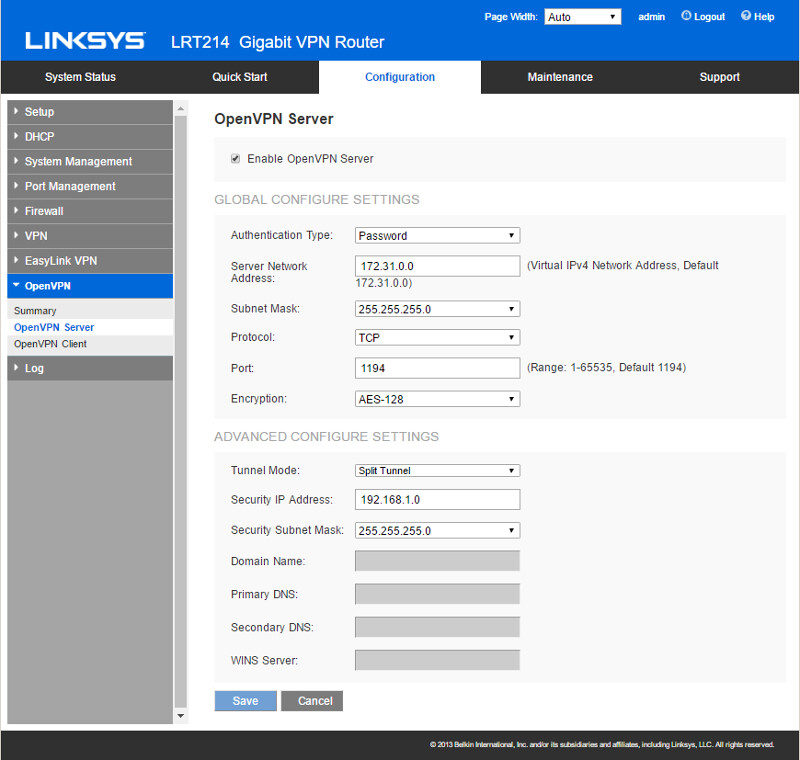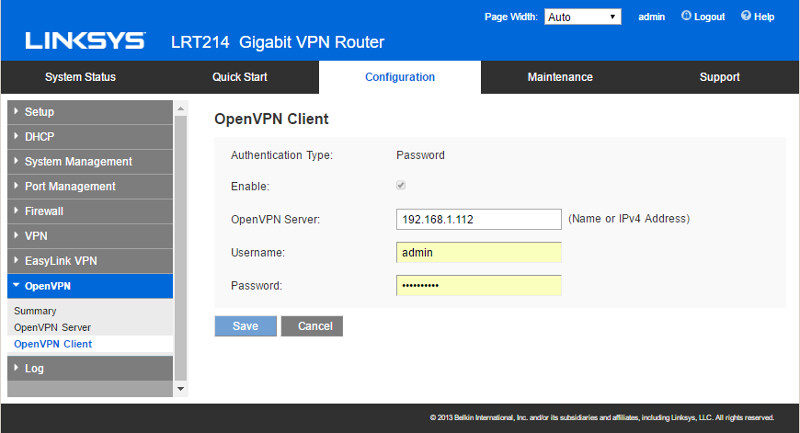Linksys LRT214 Business Gigabit VPN Router Review
Bohs Hansen / 8 years ago
GUI – Firewall and VPN
We’ve seen the basic router features so far and not that they weren’t great, but the real reason this router is so exciting are the VPN features and it is time to take a look at the settings that are available here. But first, the firewall.
Firewall
The firewall is what I would call basic but comprehensive. It doesn’t feature a lot, but it does have the vital parts covered.
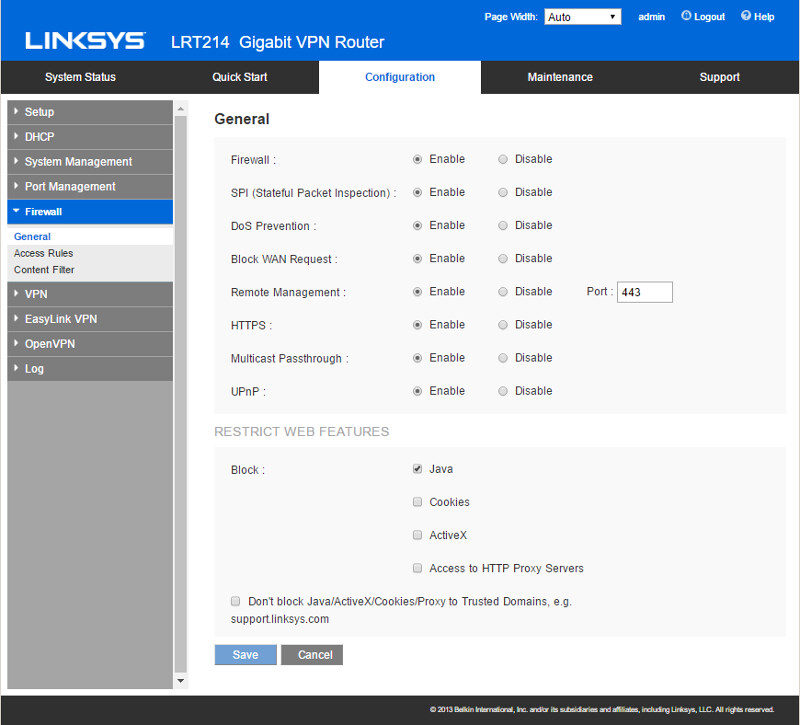
Create and edit your access rules with ease, everything is just a click away.
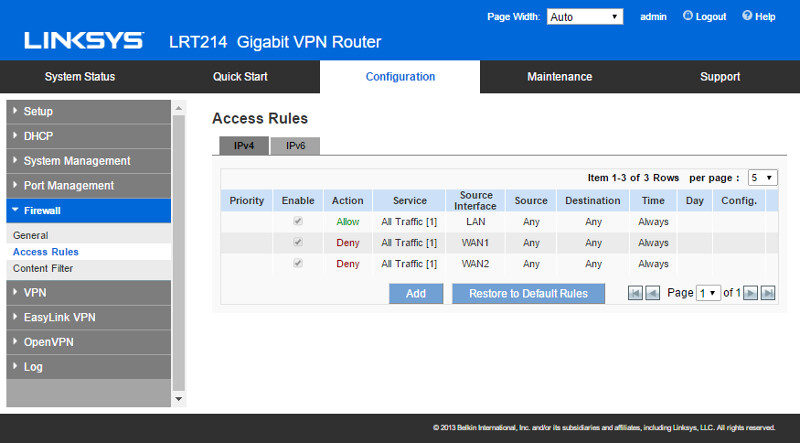
Here we get access to the convenient Service Management popup feature again, making the port selection as easy as it could be.
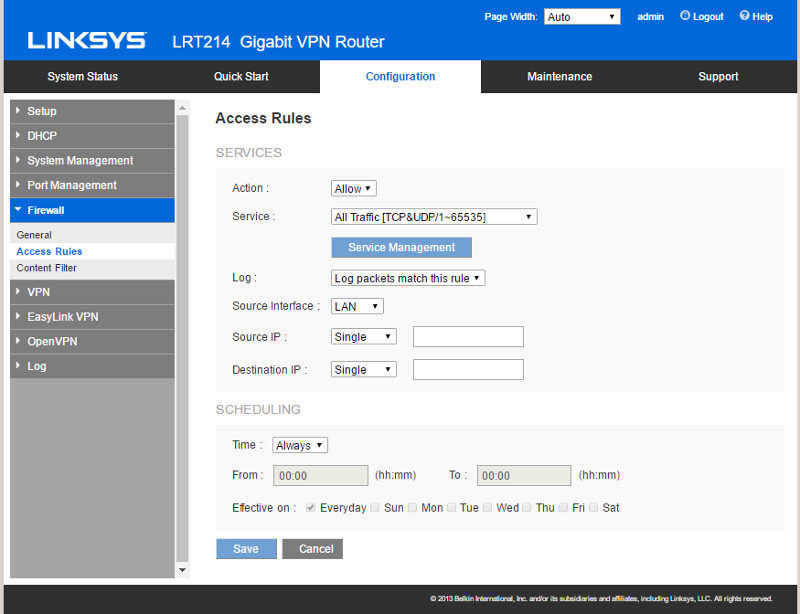
Actual content can be filtered in two ways. You can filter by domain names or by keyword.
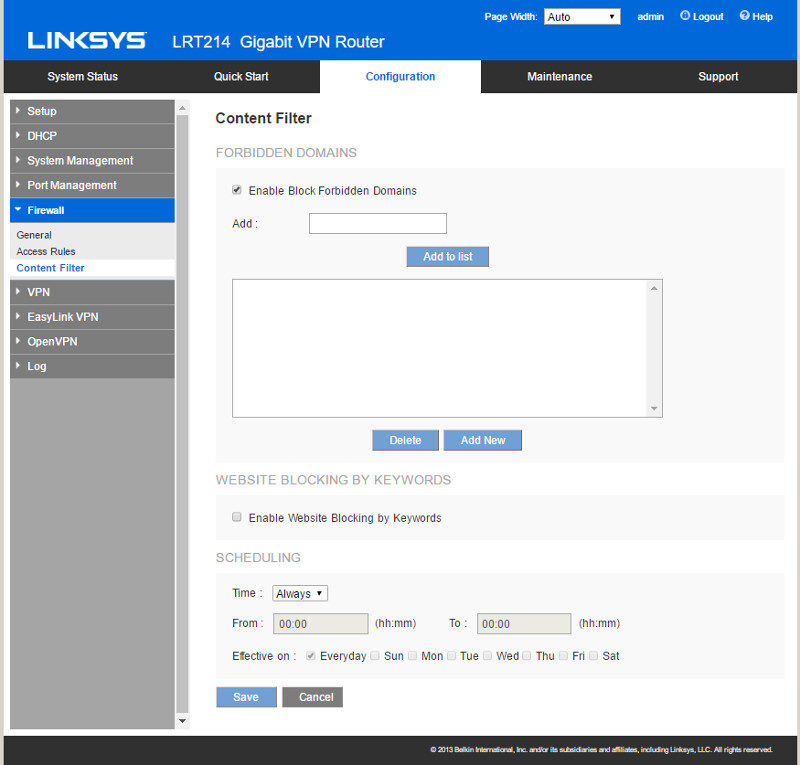
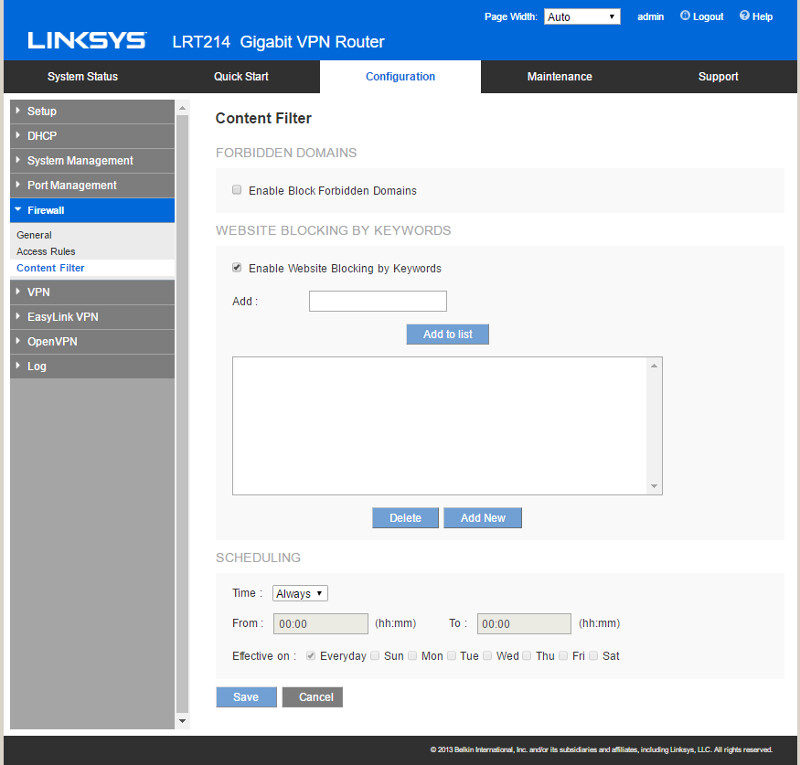
VPN
And with the firewall done, we have arrived at the first section of possible VPN settings. The initial page is a summary of our settings. As we haven’t made any yet, it’s empty.
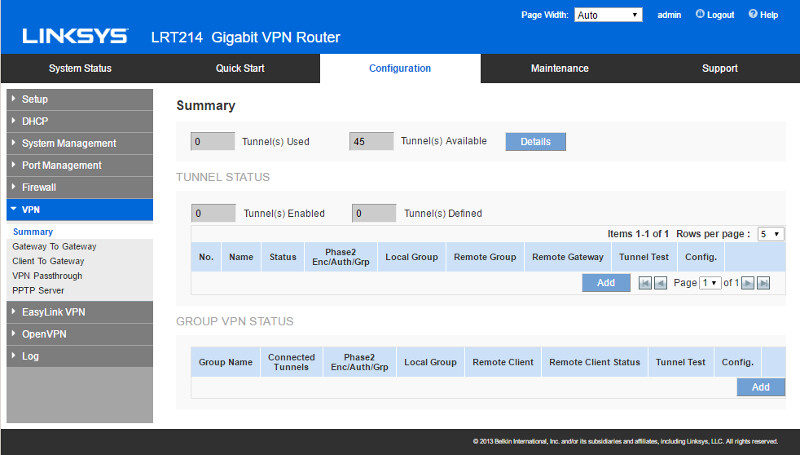
Adding a new group or tunnel is as easy as clicking the respective Add button and select what you’d like. The setup is made so easy that if you know the theory of VPNs, then you can configure it. A business class product doesn’t need to be difficult to use.
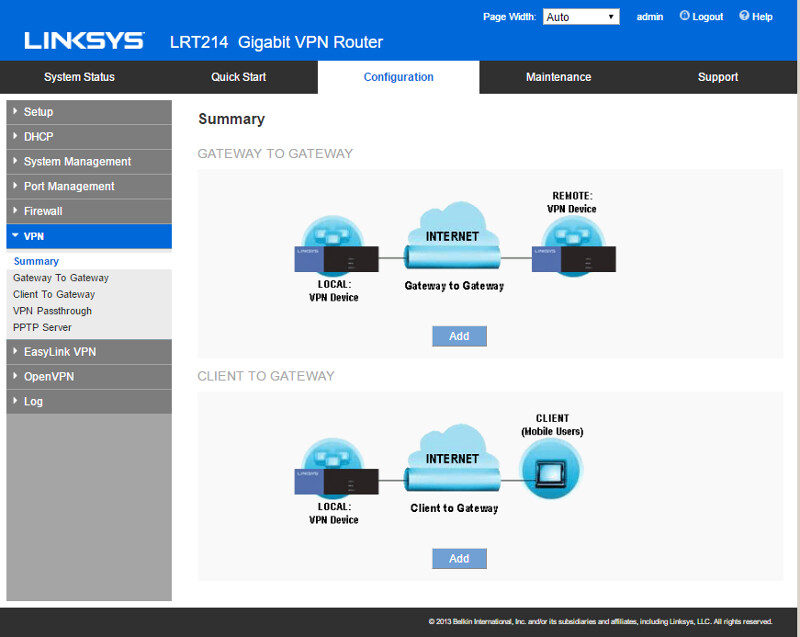
Whether you need to setup a gateway to gateway, a client to gateway, a VPN passthrough, or a PPTP server, all you need to enter is IP addresses, names, and passwords.
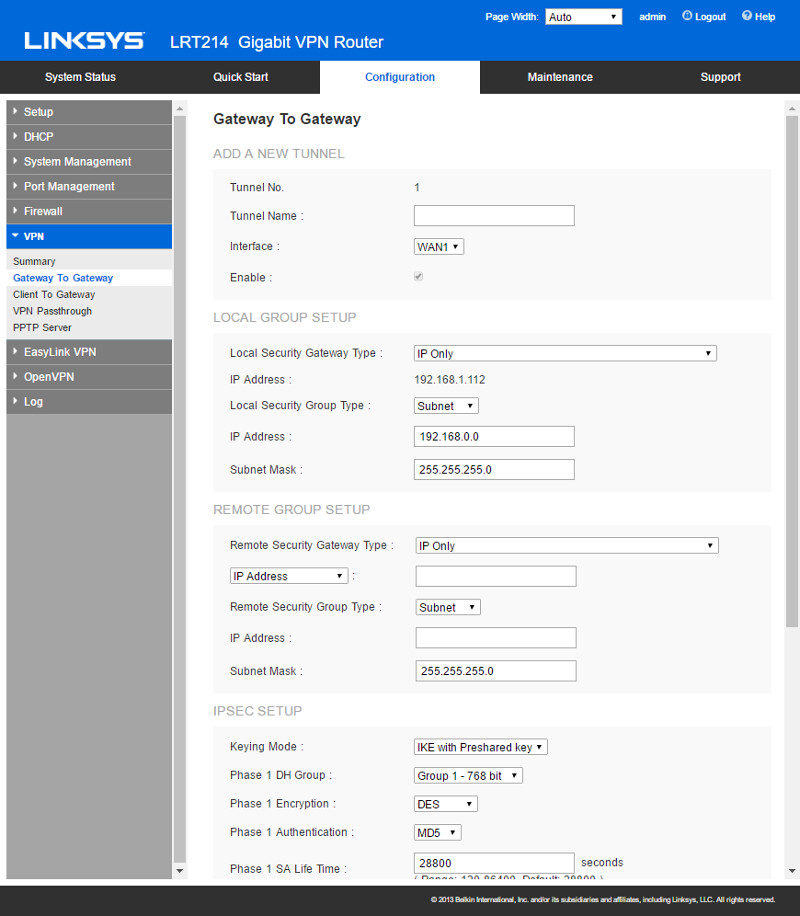
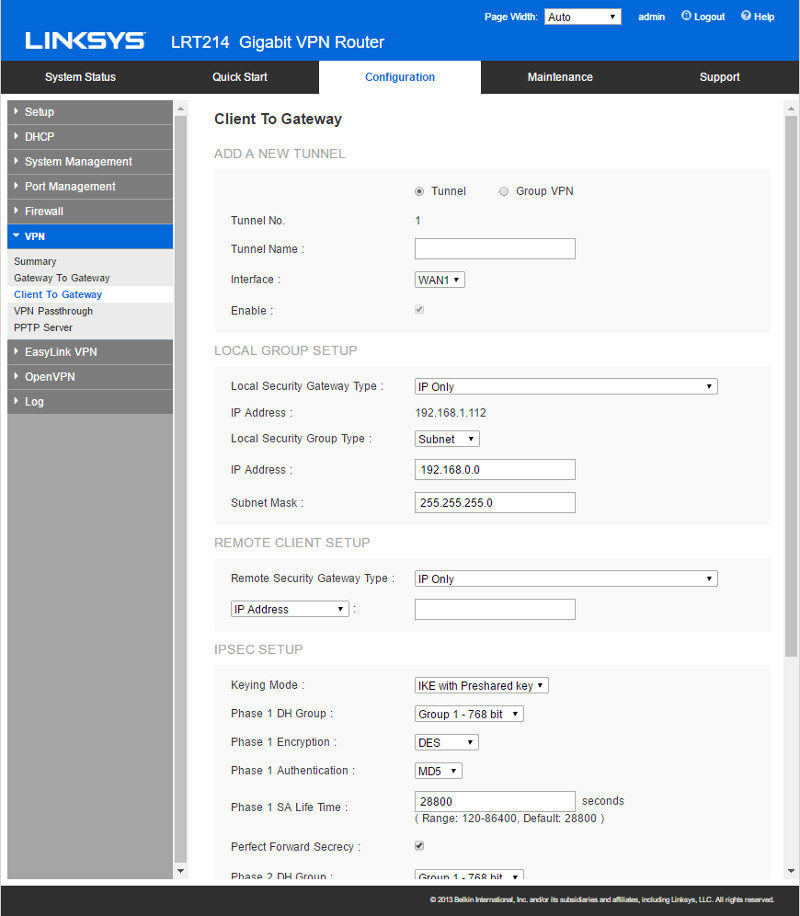
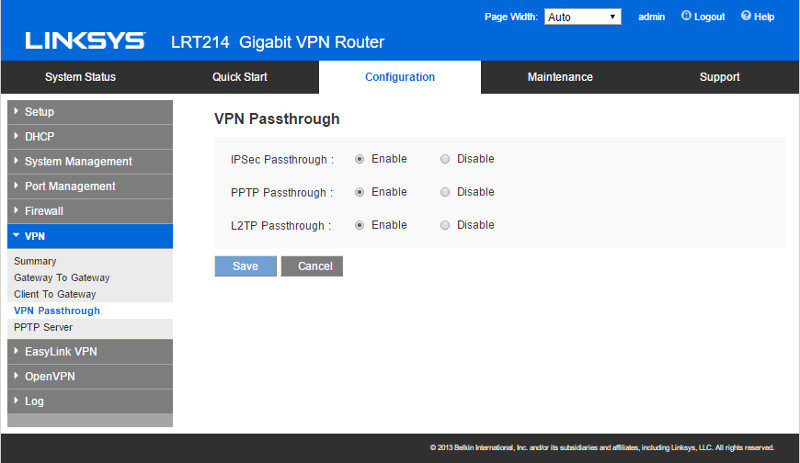
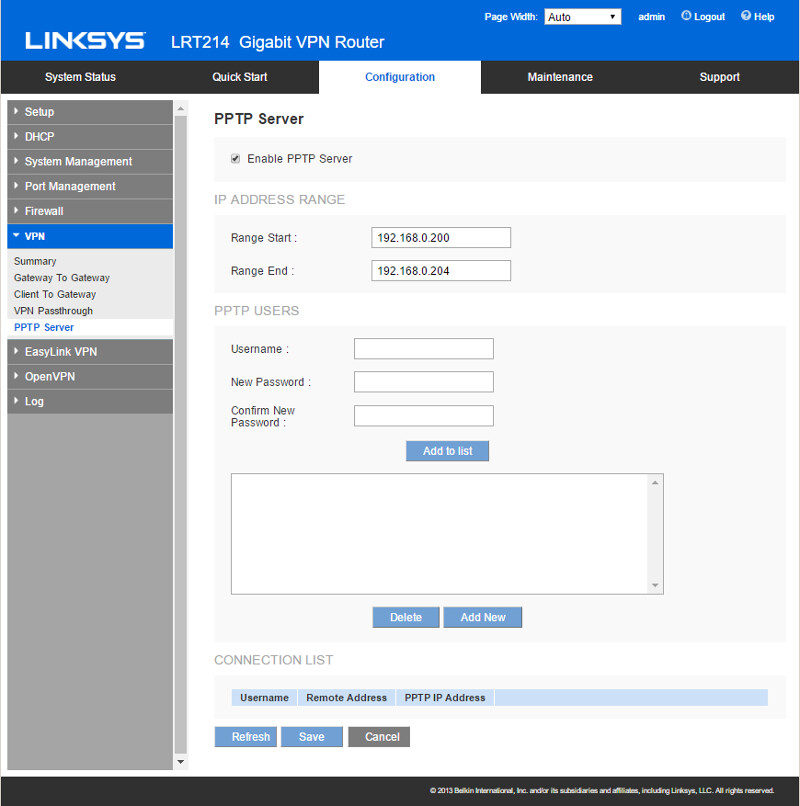
EasyLink VPN
Should the traditional VPN setup still be to complicated for you, then EasyLink VPN is just the thing for you. EasyLink VPN replaces the conventional complicated VPN setup process by entering Server IP, User Name, and Password.
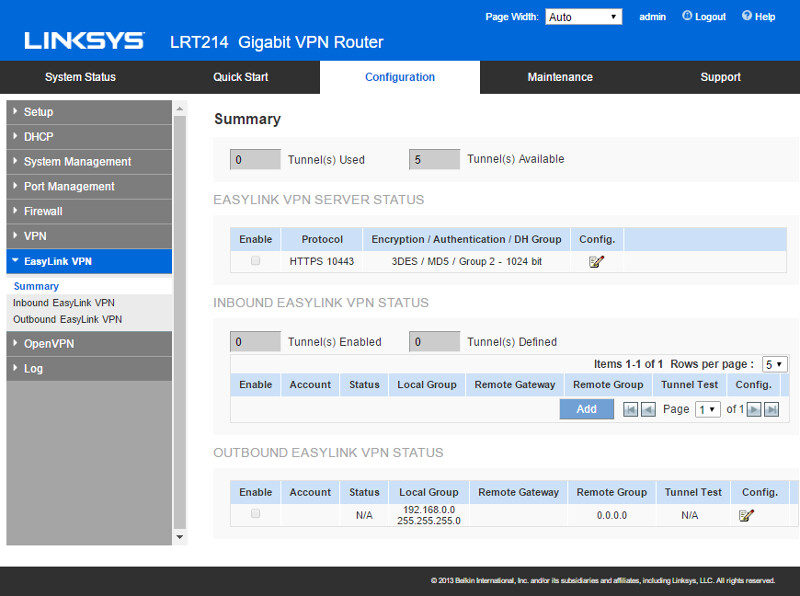
An LRT router can be an EasyLink VPN Server and an EasyLink VPN Client. As a Server, the LRT router can accept inbound connections from up to five Clients and as a Client, the router can make one connection request to a Server. The authentication between Server and Client is through username and password.
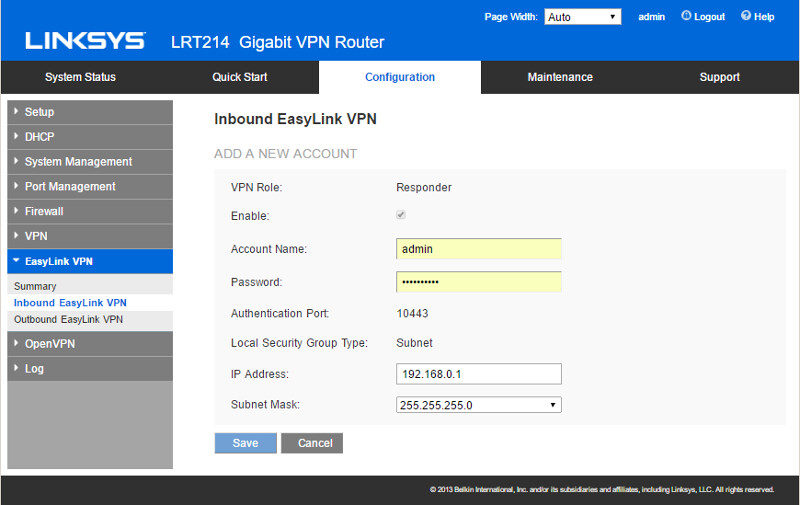
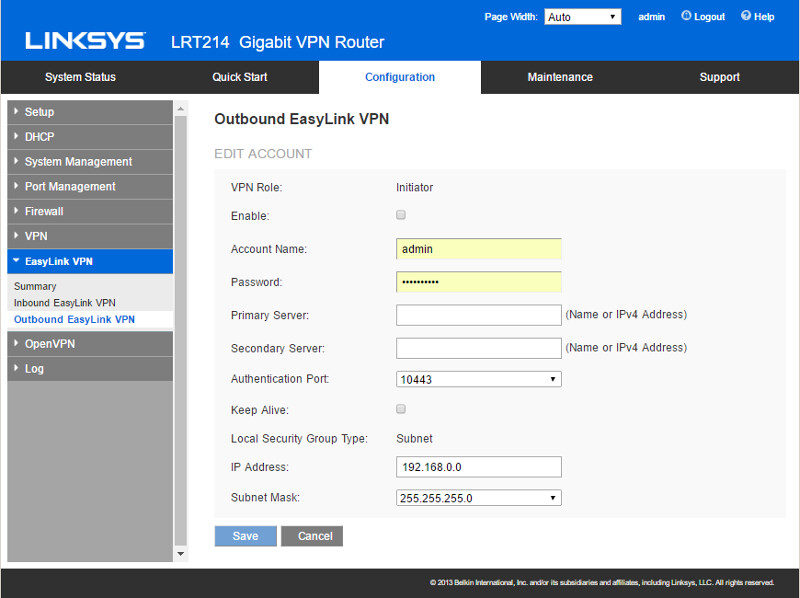
OpenVPN
OpenVPN is an open-source project as the name already suggests. It uses a custom security protocol that utilizes SSL/TLS for key exchange and it is capable of traversing network address translators (NATs) and firewalls.
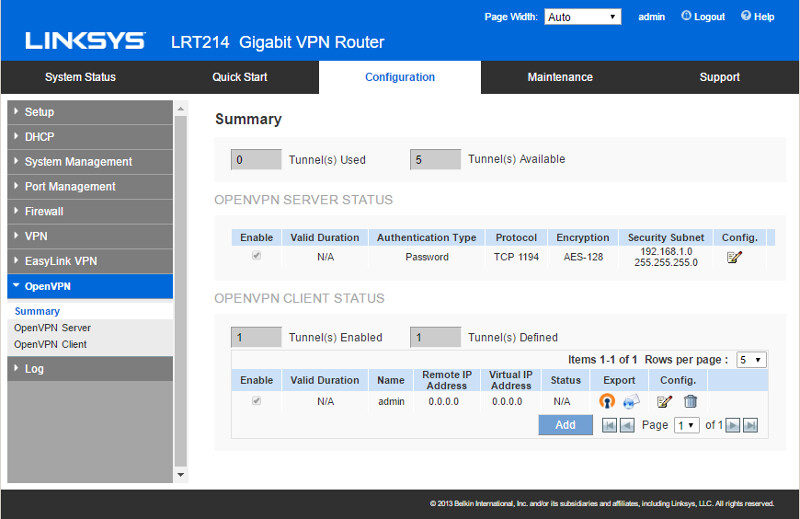
OpenVPN allows peers to authenticate each other using a pre-shared secret key, certificates, or username/password.
